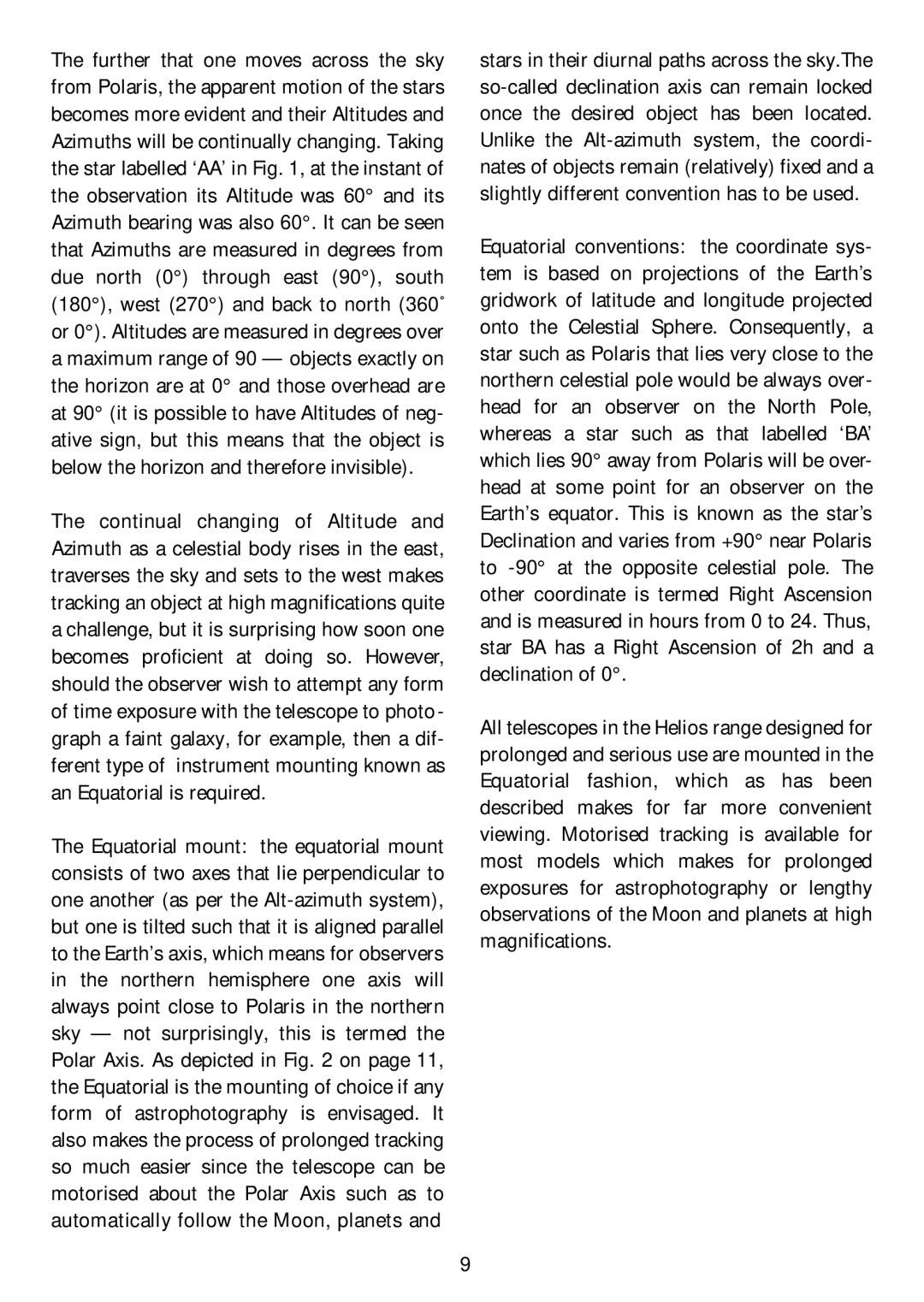The further that one moves across the sky from Polaris, the apparent motion of the stars becomes more evident and their Altitudes and Azimuths will be continually changing. Taking the star labelled ‘AA’ in Fig. 1, at the instant of the observation its Altitude was 60° and its Azimuth bearing was also 60°. It can be seen that Azimuths are measured in degrees from due north (0°) through east (90°), south (180°), west (270°) and back to north (360˚ or 0°). Altitudes are measured in degrees over a maximum range of 90 — objects exactly on the horizon are at 0° and those overhead are at 90° (it is possible to have Altitudes of neg- ative sign, but this means that the object is below the horizon and therefore invisible).
The continual changing of Altitude and Azimuth as a celestial body rises in the east, traverses the sky and sets to the west makes tracking an object at high magnifications quite a challenge, but it is surprising how soon one becomes proficient at doing so. However, should the observer wish to attempt any form of time exposure with the telescope to photo - graph a faint galaxy, for example, then a dif- ferent type of instrument mounting known as an Equatorial is required.
The Equatorial mount: the equatorial mount consists of two axes that lie perpendicular to one another (as per the
stars in their diurnal paths across the sky.The
Equatorial conventions: the coordinate sys- tem is based on projections of the Earth’s gridwork of latitude and longitude projected onto the Celestial Sphere. Consequently, a star such as Polaris that lies very close to the northern celestial pole would be always over- head for an observer on the North Pole, whereas a star such as that labelled ‘BA’ which lies 90° away from Polaris will be over- head at some point for an observer on the Earth’s equator. This is known as the star’s Declination and varies from +90° near Polaris to
All telescopes in the Helios range designed for prolonged and serious use are mounted in the Equatorial fashion, which as has been described makes for far more convenient viewing. Motorised tracking is available for most models which makes for prolonged exposures for astrophotography or lengthy observations of the Moon and planets at high magnifications.
9
